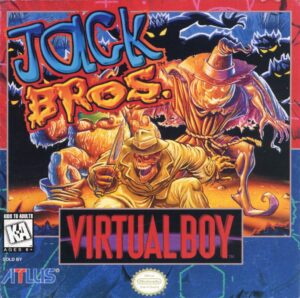Retro Replay Review
Gameplay
Vertical Force delivers a classic Gradius-style shoot ’em up experience with a modern twist. From the moment you take control of the agile fighter craft, you’ll find yourself engaging waves of enemies that demand quick reflexes and strategic thinking. The standard power-up options—Laser, Wide Shot, and Shield—are all familiar territory for genre veterans, but the true depth comes from managing and upgrading each of these systems up to three levels. Timing your power-up pickups to maximize your firepower becomes a satisfying puzzle in itself.
(HEY YOU!! We hope you enjoy! We try not to run ads. So basically, this is a very expensive hobby running this site. Please consider joining us for updates, forums, and more. Network w/ us to make some cash or friends while retro gaming, and you can win some free retro games for posting. Okay, carry on 👍)
Where Vertical Force really shakes things up is with its drone system. You can carry up to four AI-controlled drones into battle, or keep extras in reserve for when things get intense. The three drone types—Laser, Wide Shot, and Repair—each introduce distinct tactical possibilities. Laser and Wide Shot drones bolster your offensive capabilities, while Repair drones quietly restore your damage meter whenever they’re not pegged into the fight. Deciding which drones to deploy and when to cycle new ones into active duty adds an engaging layer of resource management.
Adding to the complexity is the game’s dual-altitude mechanic. You’ll find yourself toggling between high-altitude and low-altitude planes to dodge incoming fire or target specific enemy formations. This 3D component creates dynamic verticality rarely seen in classic top-down shooters. Mastering altitude shifts is crucial for survival, especially in later levels where screens fill with projectiles and turret-based hazards. The constant need to adapt makes each run feel fresh and keeps adrenaline levels high.
Graphics
Vertical Force strikes a fine balance between nostalgic sprite work and subtle modern embellishments. Enemy ships and bosses sport crisp pixel art, detailed enough to distinguish between hull plating, weapon mounts, and glowing engine cores. Backgrounds shift seamlessly from asteroid fields and neon-lit space stations to atmospheric cloud seas below, each palette change reinforcing the high- vs. low-altitude concept. It’s a visual treat that pays homage to the 16-bit era without feeling dated.
The animations are fluid, with sleek laser beams, wide-shot blasts, and explosion effects that pop against darker backdrops. Drone actions are similarly well-animated—watch as your Repair drones hover near your ship, gear spinning, before zipping away to fix damage. Even the user interface is thoughtfully designed, with clear indicators for power-up levels, drone health, and altitude status. This clarity matters when screen-flashing chaos threatens to obscure critical information.
Transitions between altitudes aren’t just functional; they include brief but impactful graphical flourishes. A quick zoom and tilt effect accompanies each shift, lending weight to the move and reminding you you’re piloting a craft that defies conventional 2D limitations. The overall effect is both kinetic and polished, proving Vertical Force’s visuals are more than mere nostalgia—they’re a showcase of how retro aesthetics can be enhanced with modern design touches.
Story
While Vertical Force places its emphasis squarely on gameplay, it offers a straightforward sci-fi backdrop to frame your mission. You play as a lone pilot in the V-Station Defense Force, tasked with repelling a relentless alien incursion threatening to overrun human-controlled sectors. It’s a premise with familiar beats—pilots of old games will recognize the tone immediately—but it serves its purpose well without dragging down the action.
Story elements are communicated through short introductory text screens and brief mission debriefs rather than lengthy cutscenes. This minimalist approach complements the pick-up-and-play ethos, letting you dive back into the fray without skipping through exposition. For many players, this means fewer interruptions and more time battling foes. Fans of lore can piece together environmental hints and enemy designs, but don’t expect deep character arcs or branching narratives.
Still, the sense of progression—from your first tentative sortie to the climactic showdown—creates its own emergent narrative. Each power-up upgrade, drone enhancement, and altitude-based strategy contributes to your personal story of mastery. Though Vertical Force doesn’t reinvent storytelling in shooters, it offers just enough context to make every mission feel meaningful.
Overall Experience
Vertical Force is a standout entry in the top-down shooter genre that appeals to both nostalgic veterans and newer players seeking a challenge. Its layered power-up system and drone mechanics elevate it beyond a simple bullet-hell affair, rewarding thoughtful play as much as lightning-fast reflexes. The high/low altitude switching adds a cerebral wrinkle that keeps gameplay from feeling stale over extended sessions.
Visually, the game balances retro charm with modern flair, ensuring that each level feels unique and vibrant. The snappy animations and polished UI mean you always know your status, even amid onscreen mayhem. Though the story is concise, it provides adequate framing while removing any friction from jumping straight into the action.
In the realm of shoot ’em ups, Vertical Force stands tall by offering depth, style, and replayability. Whether you’re chasing high scores, perfecting drone loadouts, or simply blasting through waves of enemies, there’s satisfaction in every run. If you’re looking for a shooter that honors the classics while introducing its own innovations, Vertical Force is well worth your time.
 Retro Replay Retro Replay gaming reviews, news, emulation, geek stuff and more!
Retro Replay Retro Replay gaming reviews, news, emulation, geek stuff and more!








Reviews
There are no reviews yet.